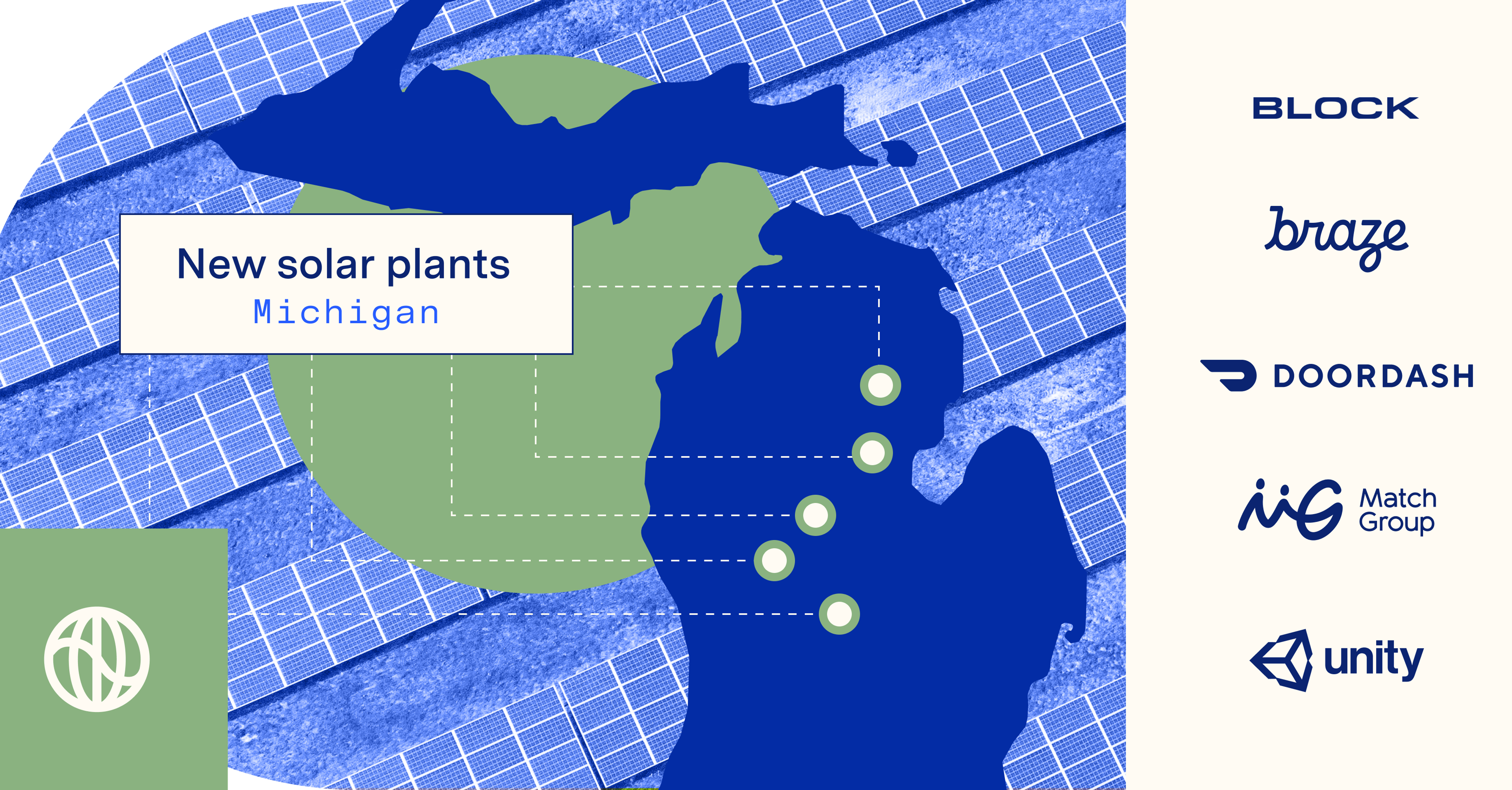The International Sustainability Standards Board (ISSB) published its inaugural disclosure standards in June 2023. These standards—named IFRS after the International Financial Reporting Standards, ISSB’s parent organization—include guidelines for broader sustainability reporting (IFRS “S1”) and for climate reporting specifically (IFRS “S2”). These standards aim to be the new global baseline for sustainability disclosures, with companies free to report against them as soon as 2024.
This guide covers what companies need to know about the new ISSB reporting standards, and how these requirements fit with other climate disclosure standards—both voluntary and mandatory—across the US, UK, and EU.
ISSB’s relationship with other global standards
ISSB was created in the aftermath of the COP26 UN climate summit by the International Financial Reporting Standards Foundation (IFRS), a non-profit responsible for modern global carbon accounting standards. Its purpose is to harmonize the world around a common set of disclosure rules that are consistent, complete, comparable, and verifiable.
“ISSB [was] established to bring to an end the alphabet soup in the market and make sure that we had a system of reporting that really provided the information investors need.” - Sue Lloyd, Vice Chair of ISSB
Other global standards and frameworks that exist have one of three relationships with ISSB:
- They will formally consolidate with ISSB, and will no longer exist independently. This includes the Value Reporting Foundation (which SASB and IIRC merged into) and CDSB. Any companies that have been reporting into these programs can begin reporting into ISSB instead, starting in 2024.
- They will collaborate with ISSB to align climate-related disclosures. This includes most national disclosure programs, which are being restructured to either adopt ISSB requirements outright or ensure strong similarity. Among them is CDP, which will incorporate ISSB beginning in 2024. In our on-demand webinar, Paul Simpson, CEO of CPD, gives a prelude of what’s to come for the CDP disclosures.
- They are the foundation for ISSB, and will now exist as a stepping stone. This mainly applies to TCFD, the up-until-now global baseline for voluntary disclosures. As the “culmination” of what TCFD set out to do, ISSB adopts TCFD’s four pillars focused on climate disclosure and will gradually apply them to other areas of sustainability like water, waste, and biodiversity—while also asking for additional data and analysis on climate items. Mandatory programs that currently require an annual TCFD report will gradually switch to asking for ISSB reports instead. In the meantime, ISSB has taken over the monitoring of TCFD reporting by companies, to assist the gradual phase out of TCFD reporting over the coming years.
Crucially though, there’s one aspect where ISSB differs from a few of these other programs (particularly EU programs like the CSRD): ISSB focuses on the climate’s impact on the filing organization, not their impact on the climate. This is known as the single-materiality approach, as opposed to a double-materiality approach that considers impact both ways. Though there are aspects of ISSB—e.g., measuring and reporting carbon emissions—that are important indicators for understanding a company’s impact on the climate.
Introducing proportionality
ISSB’s goal is for its new standards to be a true global baseline—which is especially crucial for developing countries seeking to drive more climate-focused investments. To help companies across geographies, sizes, and capabilities all meet this new bar, ISSB introduced allowances to make reporting both proportionate and flexible.
The first allowance: companies may fall back on qualitative disclosures while they build up their quantitative reporting. A company must only make use of “the skills, capabilities and resources available”, including all data that can be acquired “without undue cost or effort”. While individual governments will further qualify these rules in their local instances of ISSB, the standards as a whole balance both a widening of data collection and a continual improvement in data quality.
The second allowance: phase-in requirements. In a company’s first year of reporting, they can optionally focus on just reporting against the S2 climate disclosures—before also reporting on the wider S1 sustainability disclosures the year after. Companies may also opt out of reporting their scope 3 emissions—i.e, from suppliers—in their first year of S2 reporting. Lastly, companies can declare relief for their first S1 filing for a maximum of nine months from their typical annual report.
International Sustainability Standards Board (ISSB) Standards
ISSB has released two sets of standards:
- General sustainability disclosures (S1), which apply the TCFD approach to non-climate-related sustainability issues.
- Climate disclosure standards (S2), which apply the TCFD approach to climate-related considerations like physical and transition risks, climate resilience, and GHG emissions.
The standards are structured around TCFD’s four pillars:
Governance and risk management pillars
For two of these pillars—governance and risk management—ISSB’s required disclosures are roughly the same as TCFD’s. Filers must map out exactly how sustainability and climate thinking has been embedded across their organizations—mostly to demonstrate to investors that sustainability and decarbonization aren’t the work of a single team, but a real part of regular business processes and internal reporting structures.
For the remaining two pillars, ISSB asks for quite a bit more detail.
Strategy pillar
This section is based around the assessment of climate risks and opportunities and how they affect the filing company. This is by far the most demanding section of both standards.
S1 strategy requirements
S1 requires broadly similar disclosures, based on SASB standards as described in the following section.
S2 strategy requirements
For S2 (climate) requirements, companies must outline all the climate risks and opportunities that they reasonably expect might impact:
- Their business model, overall strategy, and access to cash and capital (over the short, medium, or long term)
- Their value chain (e.g., supplier concentration in an affected geographic area)
- Their decision-making, including their decarbonization plans (i.e., detailing how a risk or opportunity might accelerate said plans, which are often called transition plans)
- Their financial position and planning over the short, medium, and long term, including cash flows during the period being reported
- Their expected resilience under different scenarios, including capacity to adjust over time
Filers will also need to list out any “significant areas of uncertainty” across the disclosures and go into detail on how their scenario analyses were conducted.
Metrics pillar
S1 metrics requirements
In lieu of defining its own collection of sustainability categories, ISSB opted to lean primarily on those already created by SASB. Each category should be included or omitted based on a broad idea of materiality, which ISSB defines as anything “that could reasonably be expected to affect an entity’s prospects”. That is, if it would have made a difference to an investor, it should be disclosed.
Custom metrics are permissible, so long as they’re appropriately explained. Companies can also reference other complementary standards like GRI, CDSB, and ESRS.
S2 metrics requirements
As for climate specifically, the S2 standard introduces mandatory climate metrics for all filers, alongside mandatory industry-specific metrics—also based on existing SASB standards.
ISSB’s mandatory, industry-agnostic metrics include:
- Greenhouse gas emissions—including all scope 3 emissions (i.e., from suppliers and/or portfolio companies*)—along with all methodologies and assumptions used
- The intensity of these emissions (i.e., relativizing them by dividing them by a business metric like revenue)
- The amount and proportion of business activities vulnerable to transition risks, physical risks, and climate opportunities
- The amount of overall investment being deployed towards climate action
- If an internal carbon price is used, what it is and how it was decided upon
- The percentage of executive pay that’s linked to climate considerations
*Applicable to financial institutions, whose scope 3 emissions include their fair share of the “financed emissions” of their portfolio companies, per PCAF’s methodology.
Additional industry-specific disclosures—including some quantitative metrics—are based on existing SASB standards, and are integrated into ISSB here. This includes detailed guidance designed to help firms identify, measure, and disclose information about climate-related risks and opportunities in their industry. Metrics vary, and in some cases include non-climate indicators on sustainability issues like water and land use.
Targets pillar
While companies are free to set their own climate targets, ISSB requires them to disclose:
- What the targets are (including whether they represent absolute reductions of total emissions or relative reductions compared to a baseline period)
- Any relevant baseline numbers
- The time periods involved (which can be separate for interim and long-term targets)
- The metrics used to assess progress
- How each target compares with international agreements on climate change (largely the Paris Agreement)
- Whether each target uses a sectoral decarbonization approach (as is the case with any Science Based Targets)
- Whether the targets have been validated by a third party
- How they plan to factor offsets in their accounting, including commentary on the types of offsets used and how they were verified / why they should be considered credible
ISSB’s relationship with other local standards
Regulators around the world—just as they’ve done with the other IFRS accounting rules used by 120+ countries—have committed to integrating ISSB into their own mandatory reporting programs. Though pace and progress will vary by location:
- The UK will be using ISSB in their final development of their Sustainable Disclosure Requirements (SDR) regime. We also expect them to update their various existing TCFD-based programs to align with ISSB as they slowly integrate each into their new master SDR framework. This work is set to begin this year.
- The EU’s upcoming Corporate Sustainability Reporting Directive (CSRD) will be closely matched with ISSB. Both will cover sustainability disclosures that go beyond climate, and the EU has been clear that it has considered ISSB alignment in their drafting. The CSRD will be more comprehensive as it will consider double materiality.
- The US has released disclosure proposals, via the SEC, that line up neatly with ISSB in its general focus on the needs of investors and capital markets. Though the SEC’s proposals don’t go as far on metrics or targets—and, as proposed, allow scope 3 emissions to only be reported when “material”.
- Globally, many other countries—including Singapore, Canada, China, Brazil and South Africa—have all announced plans to integrate the new ISSB standards.
How does ISSB filing work
While individual countries work to define their own rules for mandatory ISSB filings, companies who opt to file voluntarily may do so as a subsection to their general annual financial filings—beginning in the 2024 reporting year.
ISSB disclosure standards: What’s next?
Part of ISSB’s mandate is to introduce new sustainability standards that are “climate first, but not climate only”. To help determine the next phase of its work, ISSB also published a consultation paper to invite feedback—which remains open until September 2023. Likely areas include biodiversity, human rights, and human capital. ISSB will also seek to balance the creation of new standards with expanding and supporting S1 and S2 requirements.
Curious how Watershed can help you prepare for mandatory and voluntary disclosures? Get a demo.









